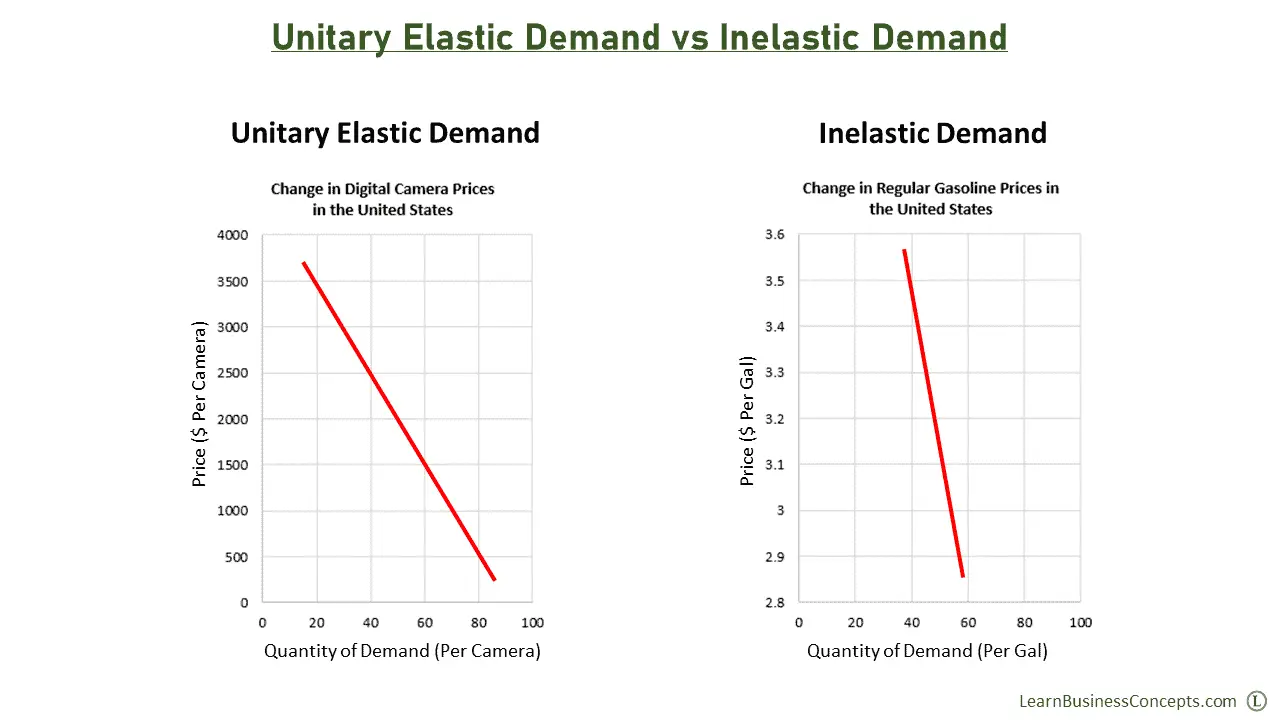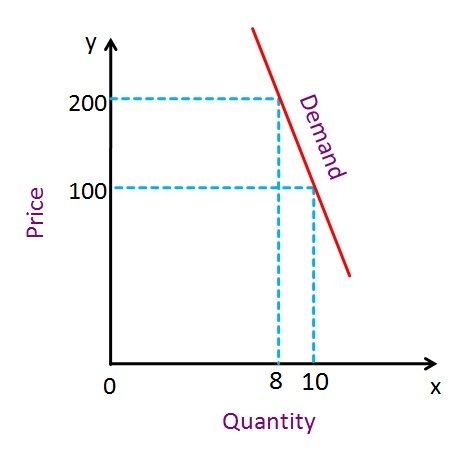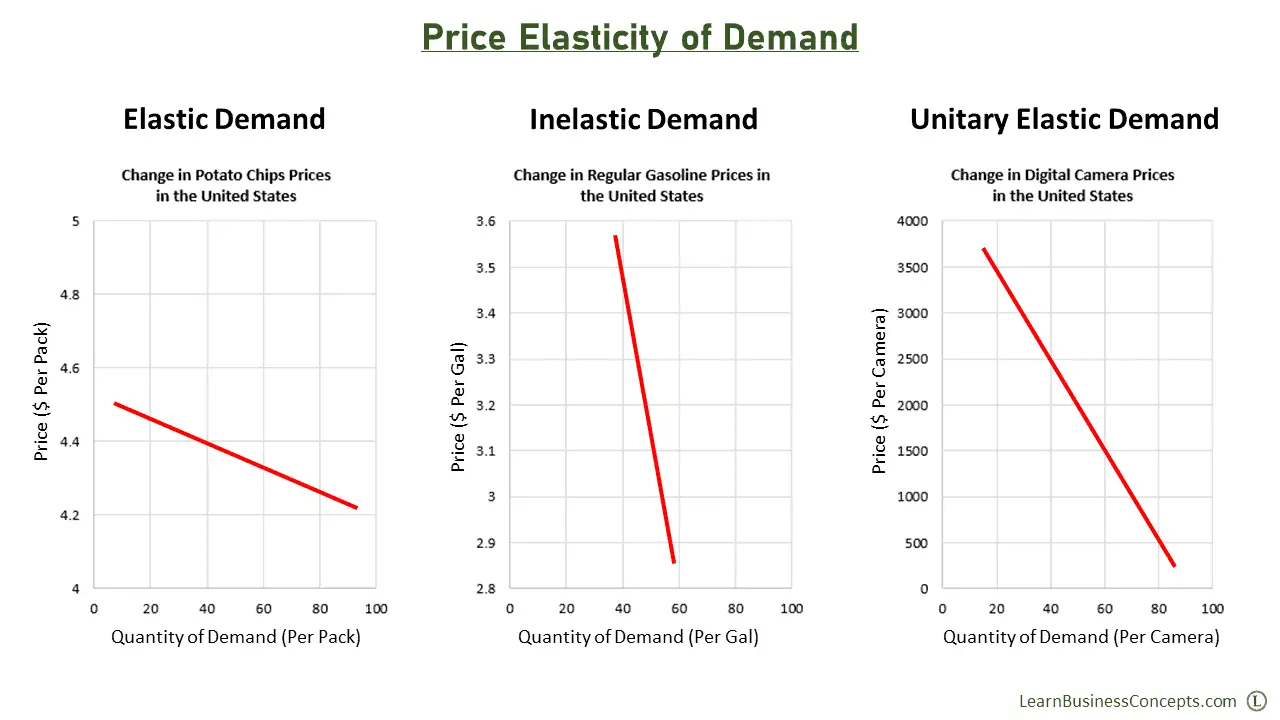Explain the Difference Between Elastic and Inelastic Demand
Non-Elastic demand is given change in price causes relatively smaller change in the quantity demanded. Differences Between Elastic and Inelastic Demand.

Difference Between Unitary Elastic And Inelastic Demand
Explain the differences between accounting profit normal profit and economic profit.

. In this case the change in price leads to a proportionately large change in the quantity demanded. 8 rows Elastic demand means a significant change in quantity demanded when the small price gets changed. I explain elasticity of demand and the differnce between inelastic and elastic.
Elastic demand refers to when a small change in price causes a major change in the demanded quantity. Explain the difference between elastic and inelastic. A product or service has elastic demand when its price elasticity of demand is greater than 1 unit-elastic when price elasticity is 1 and inelastic when the price elasticity is less than 1.
It is calculated by dividing the percentage change in the quantity demanded by the. It implies that the demand is completely unresponsive to any change in the price of the good. The lost kinetic energy is transformed into thermal energy sound energy and material deformation.
On the other hand inelastic demand refer to when a change in price does not affect the quantity demanded for a certain good at all. Answer of Explain the difference between elastic and inelastic demand. If the demand changes by more than the.
With elastic demand demand changes more than the other variable most often price whereas with inelastic demand demand does not change even when another economic variable changes. Essentially elastic goods are price-sensitive while inelastic goods are price-insensitive. Inelastic demand means a change in of a good will not have a significant effect on the amount requested.
The perfectly elastic demand curve is parallel to the OX axis. In inelastic demand an increase in pricep reduces demand q however the total revenue R pq increases. It implies that the demand is infinitely responsive to any change in the price of the good.
Why are the two concepts important to transportation demand. What is the difference between elastic and inelastic demand. Provide an example of each type of demand.
The difference between elasticity and inelasticity of demand is the proportion of this change. In this case the change in price leads to a proportionately less change in the quantity demanded. On the other hand the inelastic demand refers to the commodity whose quantity demanded doesnt change even due to the rise in the price of that certain commodity.
It represents a flatter demand curve. The elastic demand refers to the negative change in the quantity demanded by the customers or consumers due to the change in the price of that specific commodity. Elastic demand is when a small change in the price of a good causes a larger change in the quantity demanded.
The differences between elastic and inelastic collisions is tabulated below. The differences between elastic and anelastic demand can be drawnon the following reasons. N elastic demand or elastic supply is one in which the elasticity is greater than one indicating a high responsiveness to changes in price.
Products with inelastic demand have a percentage change less than 1. Elastic demand means that the amount or quantity of a certain product changes in large measure when the price of the product changes particularly when the percentage of change in the quantity of the product being demanded is greater than the change in price. Inelastic demand means that the amount or quantity of a certain product changes in small measure.
Elastic vs inelastic graph. From the calculation if the coefficient of elasticity of demand is greater than or equal to one then the demand is elastic whereas if the coefficient of elasticity of demand is less than one the demand is said to be inelastic. Elastic demand refers to the adverse change in the quantity of a product on account of the minute changes in the price of that particular productIt denotes how demand and supply respond to each other due to cost income levels etc.
5 rows The primary difference between elastic and inelastic demand is that elastic demand is. The primary difference between elastic and inelastic demand is that elastic demand is when a small change in the price of a good cause a greater change in the quantity demanded. One can have a strong effect on the demand curve while the other.
Provide a real-life example of a good or service and describe whether or not demand for this particular good is elastic or inelastic. Atlanta braves pitchers in the 70s. Differences between elastic and inelastic collisions.
Price elasticity of demand measures the responsiveness of quantity demanded to change in price. Inelastic Collision An inelastic collision can be defined as a type of collision where this is a loss of kinetic energy. The difference is in the total revenues.
Romance books with a happy ending. New york district attorney office. If a company has customers who have elastic demand what impact will price changes have on that companys total revenue.
Elastic demand is given change in price causes relatively larger change in the quantity demanded. Price Elasticity of demand is the difference in quantity demanded compared to difference in price. In elastic demand a reduction in price p increases demand q to the extent that the total revenue Rpq increases.
By - April 21 2022. An inelastic demand or inelastic supply is one in which elasticity is less than one indicating low responsiveness to price changes. Explain the difference between elastic and inelastic.

What Is The Difference Between Elastic And Inelastic Demand Quora

Difference Between Elastic And Inelastic Demand With Comparison Chart Key Difference

No comments for "Explain the Difference Between Elastic and Inelastic Demand"
Post a Comment